Of all the many beautiful colors that peppers come in, purple may be the most rare. You’re probably more familiar with green, orange, red, and yellow peppers.
So, in this article, I’ll share 11 amazing purple peppers that you can grow in your own backyard! There are sweet, spicy, and even superhot pepper varieties to choose from, all in gorgeous violet color.
1. Purple Beauty Bell Pepper
- Heat level: Sweet (no heat)
- Get seeds here
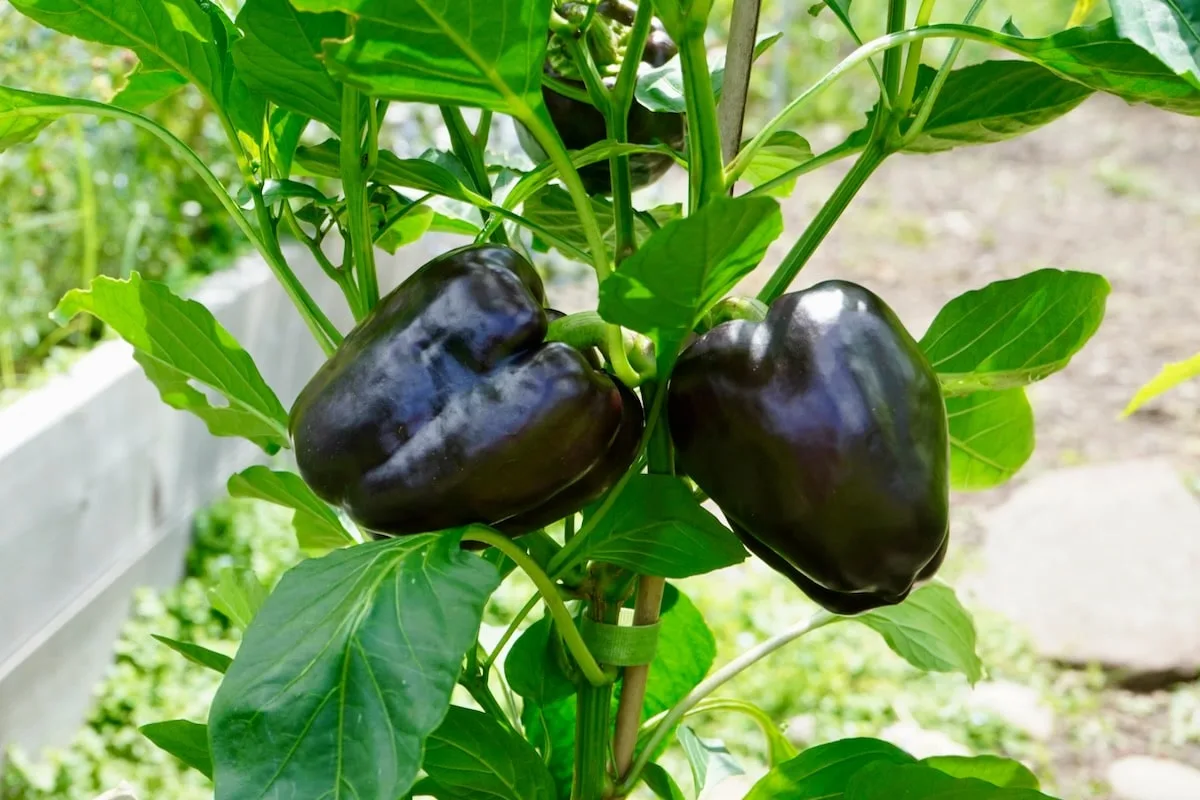
The purple beauty bell is a very popular sweet variety. The peppers start off with streaks of purple and green, and can become fully purple in full sun conditions.
Eventually the peppers will ripen to a deep red color. However, the unripe purple peppers are gorgeous during the early and mid-summer months. They can also be eaten at any stage, so you can harvest the purple beauty when they have a creamy, lavender color.
2. Purple UFO Pepper
- Heat level: Medium
- Get seeds here
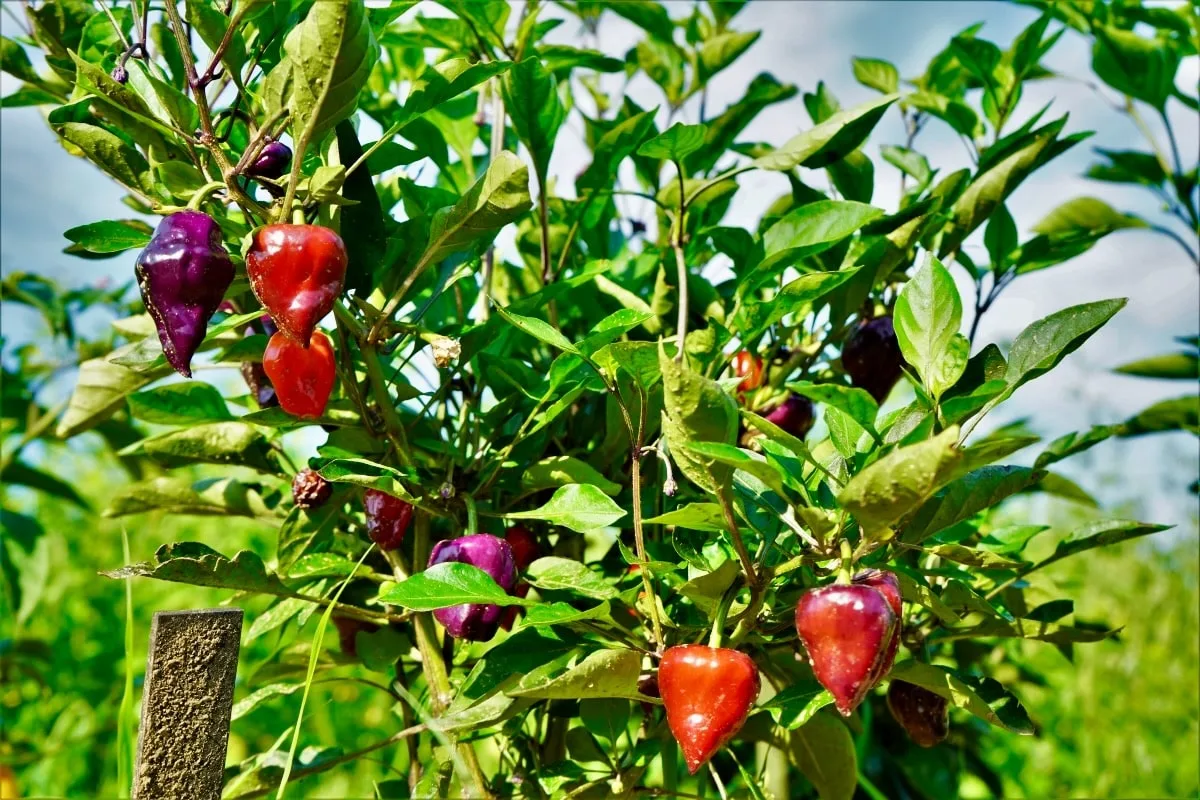
If you like your peppers spicy, the purple UFO is a great purple pepper variety to grow. These upside-down-cone shaped chiles go through a beautiful color transformation as they ripen.
The UFO pepper starts off bright, pasty purple, eventually ripening to a crimson red. The heat level is medium (they’re not as hot as they look), similar to that of a hot jalapeño.
Watch More On Purple Peppers:
3. Pimenta Da Neyde
- Heat level: Hot
- Get seeds here
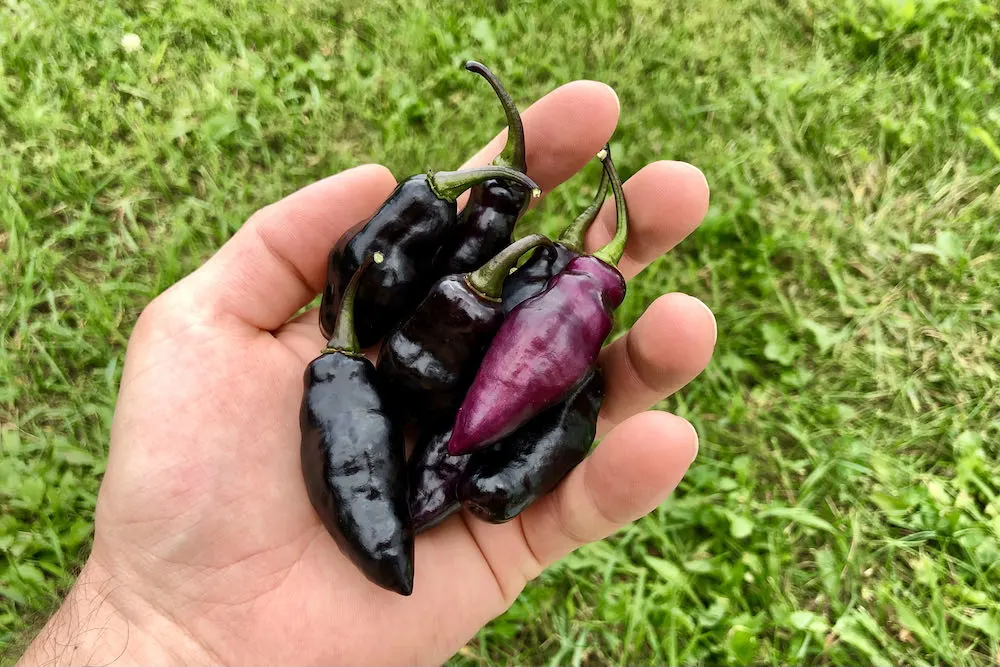
The pimenta da neyde pepper was discovered in Brazil, and is believed to be a natural cross between two Capsicum species (C. annuum x C. chinense). This pepper is one of the few types that never changes from its dark purple color, even when ripe.
The heat level is high, so it is best for making hot sauces or spicy spice blends in the kitchen. Pimenta da neyde peppers can also be pickled or fermented, making a beautiful purple brine.
4. Black Pearl Pepper
- Heat level: Medium
- Get seeds here
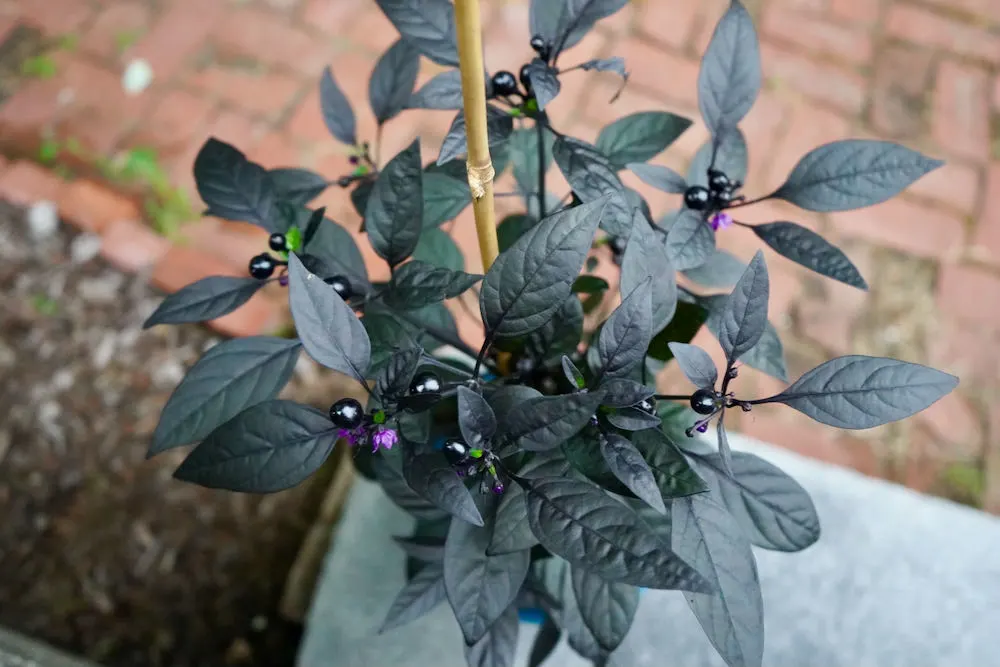
The black pearl pepper is one of our favorite ornamental peppers. The leaves, fruits, and flowers are all different shades of purple. While the peppers are so dark that they almost seem black, the flowers are a bright, radiant violet color.
Like most of the peppers on this list, they eventually ripen to bright red. In this case, the red offers amazing contrast against the dark foliage. This is truly stunning to see in the ornamental garden!
5. Purple Reaper Pepper
- Heat level: Superhot
- Get seeds here
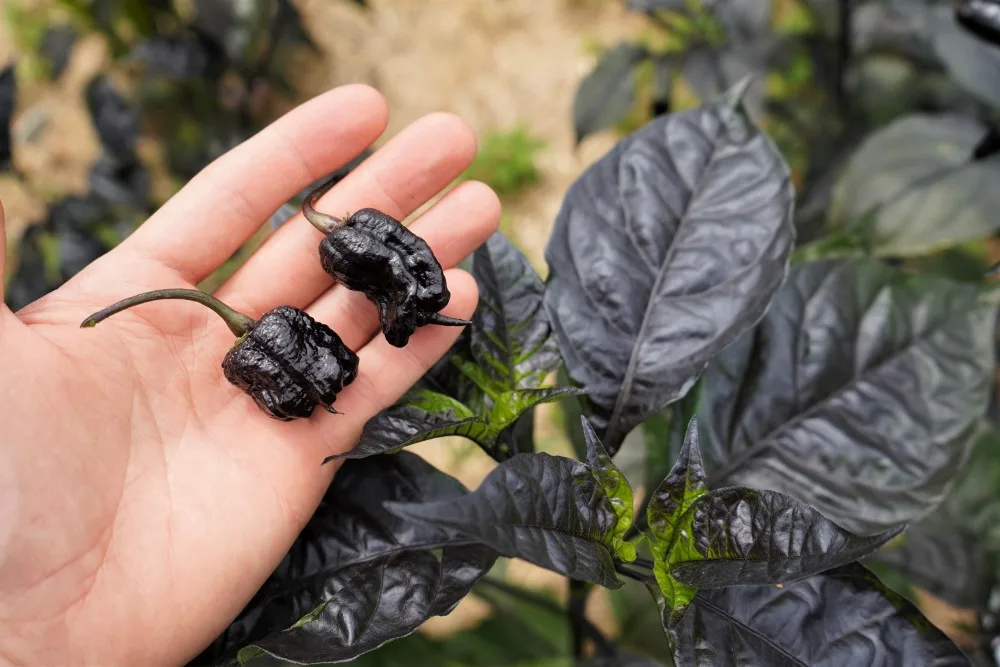
If you like it super spicy, then the purple reaper may be for you. These are some of the hottest peppers we have ever grown (and we’ve grown a lot of superhots). They are also some of the most vigorous and productive, with our plant easily surpassing 5′ tall.
Like I said, this pepper is brutally spicy, so if you don’t have a need for serious heat, I wouldn’t recommend growing it. It also ripens from dark purple to a deep red, and has a sinister appearance.
6. Buena Mulata Pepper
- Heat level: Medium
- Get seeds here

Cayenne peppers are great and all, but why not make them purple? Well, the buena mulata is pretty much a purple cayenne. These long, slender chilies have a light purple color before ripening to red.
While we weren’t impressed with the flavor or heat of these peppers (there are better cayenne varieties for flavor), they certainly made a statement in the garden. If aesthetic is more important than taste or yield, the buena mulata is a great purple pepper to grow.
7. Purple Jalapeño Pepper
- Heat level: Medium
- Get seeds here
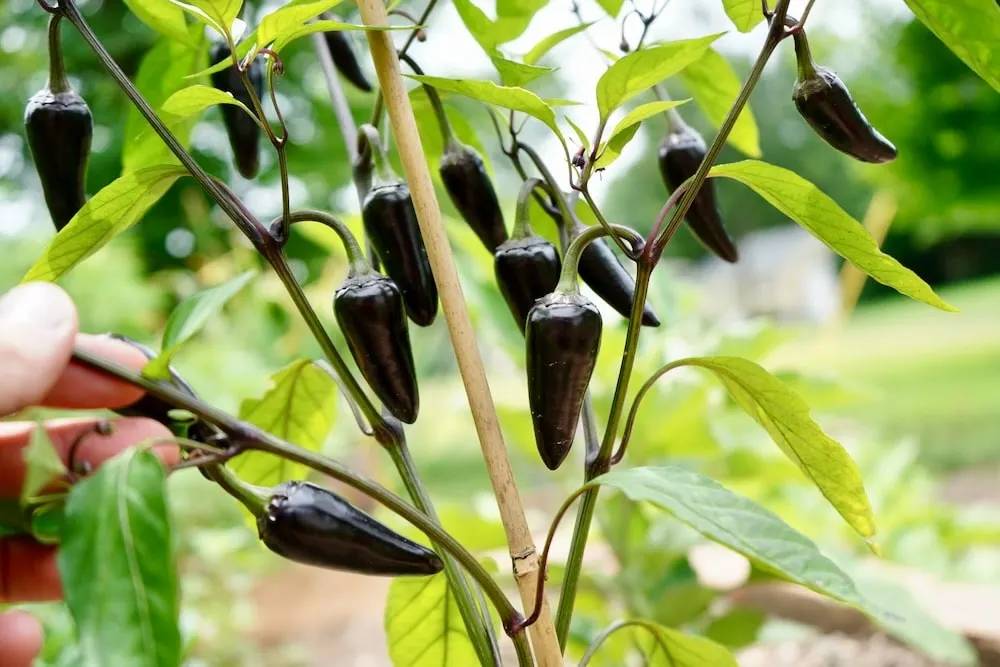
Jalapeños are a staple in our kitchen. We have tried many different jalapeño varieties in search of the best flavor, heat level, and yield. The purple jalapeño was not a winner, but it sure did look pretty!
These peppers have a unique flavor (slightly fruity), but had less heat than we wanted, and a smaller fruit size. Overall yield was also lower than other types. However, the purple peppers shaped like jalapeños were fun to watch grow.
8. Chinese 5 Color Pepper
- Heat level: Hot
- Get seeds here
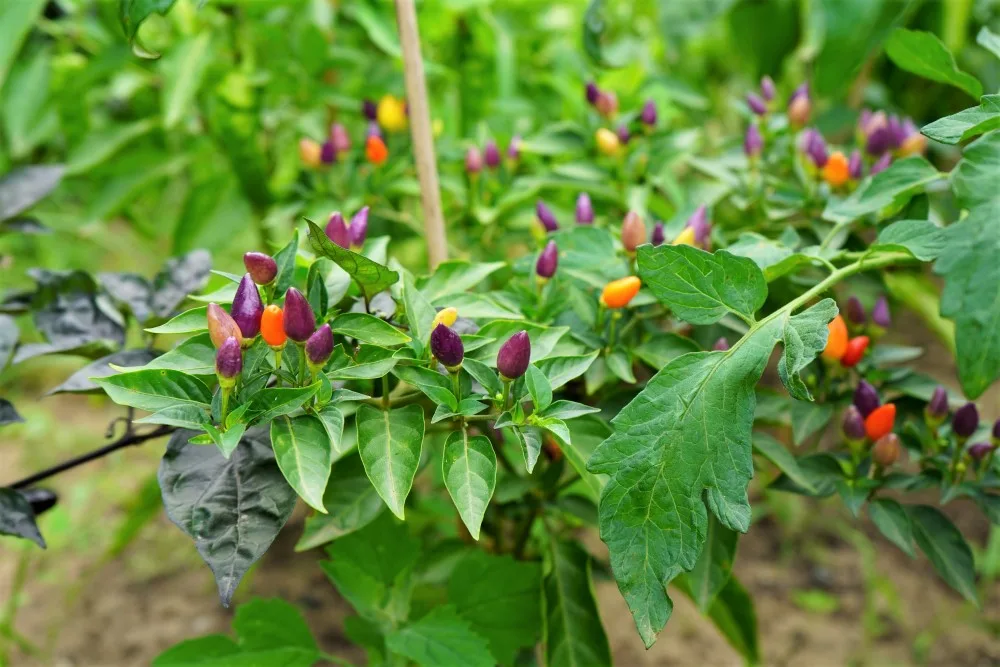
As the name would suggest, the Chinese 5 color pepper offers some great coloration in the garden! The pods often display all 5 colors at once during the summer.
If you grow this plant, expect to see yellow, green, purple, orange, and red fruits. The small teardrop shaped fruits point upwards on the plant, so all those pretty colors are on display above the foliage.
9. Fluorescent Purple Pepper
- Heat level: Hot
- Get seeds here
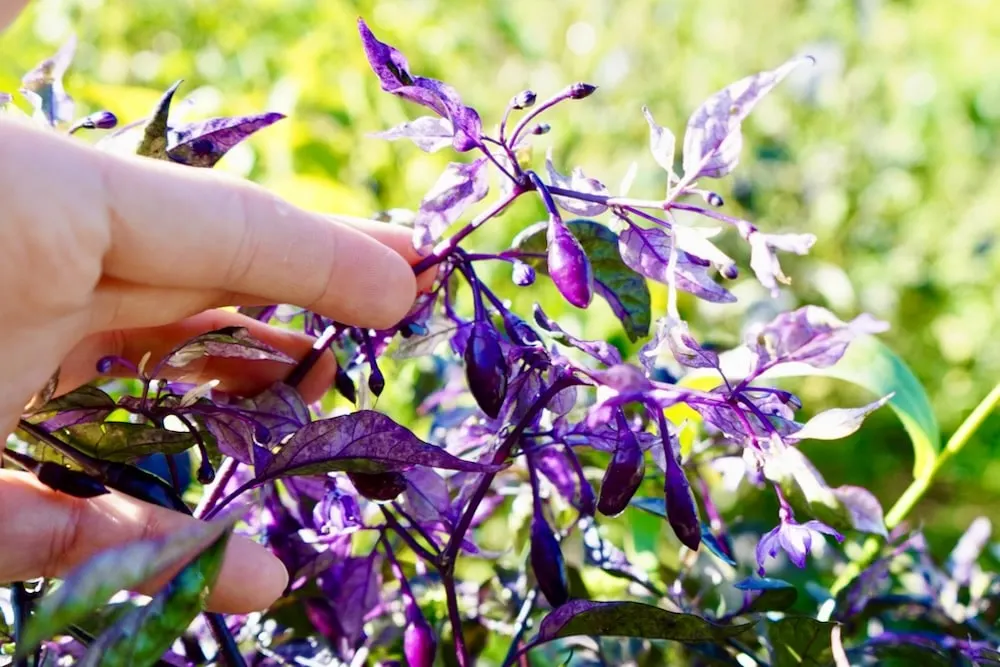
Now here is a unique pepper: the fluorescent purple. This entire plant is covered with intrigue, from the white and purple variegated foliage, to the multicolored flowers, to the purple peppers.
While seeds can be tricky to find, it may be worth the search to grow something so unique and rare.
10. Blue Ghost Pink
- Heat level: Superhot
- Get seeds here

Another superhot variety, the “blue” ghost pepper has gorgeous unripe fruits of rich purple color. The fruits eventually ripen to a bright pink color, making these a special treat for the eyes.
However, if you don’t like super spicy food, these are not for you! The seeds can also be tricky to find in stock, as this is a rare manual hybrid variety that is not well-known. Either way, we had fun watching this unique plant grow.
11. Peach Gum Tiger Pepper
- Heat level: Superhot
- Get seeds here
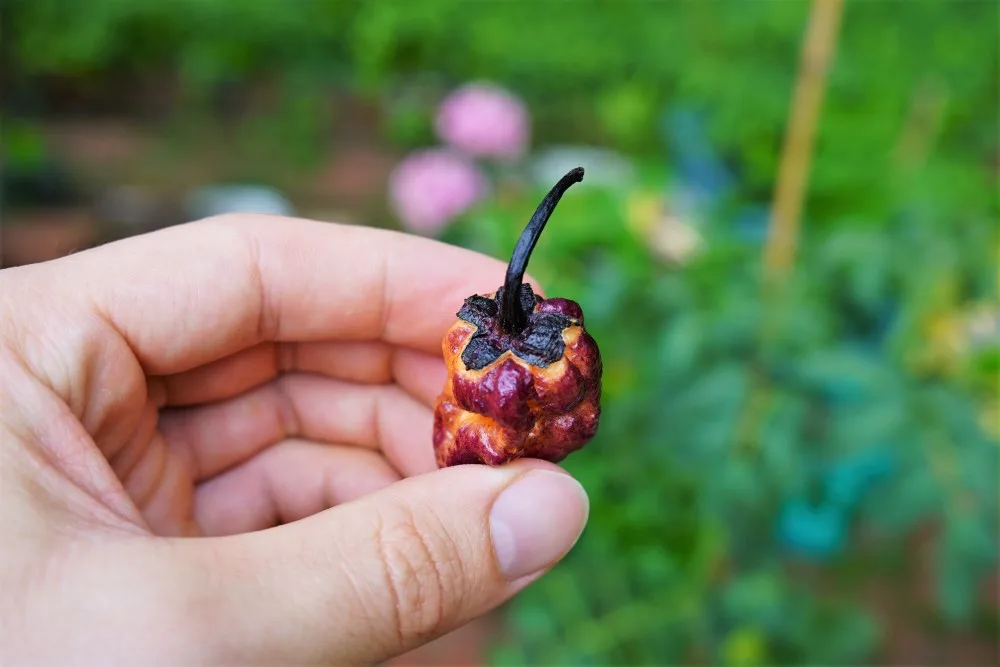
Truly one of the strangest peppers we have grown, the peach gum tiger is an odd purple pepper. This plant is rich in anthocyanins, hench all the purple coloration.
However, the fruits eventually ripen through to a gorgeous peach color with splotches of purple. Plus, the calyx on each pepper has a deep purple, almost black color, making them stand out even more against other varieties.
I hope you have enjoyed learning about some of the purple peppers that are out there. Try growing any of these, and feel free to share any other purple varieties you have grown yourself.


Donna
Monday 15th of April 2024
I am looking for a purple pepper that is not a GMO. I’m showing my great grandsons how to plant so they know where there food comes from. Donna
peppergeek
Wednesday 17th of April 2024
Sounds great! None of these are GMO peppers. There is only 1 GMO plant at the moment that is available for the public, and that is the purple tomato.
Kirsten Williams
Sunday 14th of April 2024
I got people beauty bell pepper seeds but I'm having a really hard time getting them to grow. I'm on my second attempt. The first batch of seedlings sprouted and then died almost immediately. My golden bell peppers and orange wonder pepper seeds are doing great in the same conditions. Any advice? I love in Georgia do you think direct sowing into the ground would be an option?
peppergeek
Wednesday 17th of April 2024
Hm, did they get brown at the base of the stem before dying? Not sure what could have killed them unless it froze, or the plants had damping off disease. If it's warm and the plants have plenty of light/nutrients, they should grow well! As for direct sowing, I wouldn't recommend it as the young seedlings are very slow growing and vulnerable to animals and pests. All it takes is one chomp from a bunny and they're toast!
David Niemi
Wednesday 14th of June 2023
Nice list! I've grown most of the peppers on this list, plus Pippin's Golden Honey which starts purple and ends up golden to orange. Purple and black are normally unripe colors. As noted above, except for Pimenta de Neyde which starts almost black and lightens slightly to rosy or purple on one side -- it is hard to tell they are ripe. Despite a totally different color and shape, they taste a lot like a habanero. Generally speaking, I find peppers that go through a lot of colors take longer to ripen, but if you like the colors it can be worth it. Ornamental peppers also tend to be fairly hot and have a lot of seeds; they are not usually optimized for taste or convenience in eating.